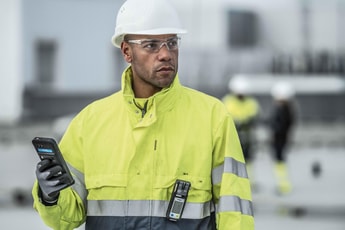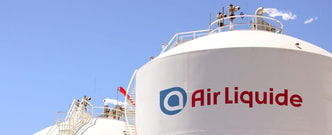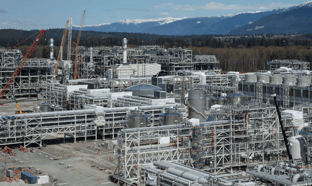Fuelling change, ensuring safety: The intersection of innovation and safety in the energy transition
The world is in a race to decrease its dependence on fossil fuels, even as global electricity demand is projected to surge in 2024 and 2025, with an expected growth rate of approximately 4%. This marks the highest annual growth rate in the last two decades, excluding spikes after the global financial crisis and the Covid-19 pandemic.
Amidst this transition, new energy carriers like hydrogen, ammonia and methanol are emerging as vital components of a sustainable energy landscape. However, these solutions bring their own set of challenges, particularly in terms of safety and risk management. To address these challenges, a multi-faceted approach is essential.
Mapping out safety in a new energy era
Handling dangerous gases requires rapid response capabilities. Interruptions in gas supply, along with the risk of fires and explosions, are significant concerns – nearly one-third of all incidents result in fires, and around half lead to explosions. Without a robust emergency plan, the consequences for personnel can be severe. Moreover, non-compliance with official operating documentation can result in substantial penalties for the facility.
“Operators and designers have a responsibility to protect lives,” explains Oliver Bornholdt, Global Business Development Manager at Dräger. “If an incident occurs, you have to prove that you have done everything to avoid it”.
While there is no such thing as 100% protection against unplanned events, a comprehensive safety and emergency management system can reduce the risk that such an emergency event occurs.
Implementing an effective safety strategy includes a thorough risk analysis of the gases being handled, the right technical equipment and well-trained employees. Additionally, a well-structured escape and rescue concept is crucial, as it coordinates emergency measures and personnel, providing decision-making certainty for managers. Dräger specialises in helping plants and facilities prepare for the worst-case scenarios, ensuring they are equipped to respond in the best possible way.
The technology to make hydrogen safety happen
To enhance the effectiveness of these safety protocols and prevent potential hazards, Bornholdt highlights the importance of three key technologies. These include ultrasonic leak detection, point gas detection, and flame detection. Each technology is specifically designed to identify risks such as leaks and fires at an early stage, thereby preventing worst-case scenarios before they can occur. This proactive approach is crucial in maintaining safety.
Ultrasonic detectors are often seen as the option for rapid and fast leak detection in many facilities. They use advanced microphone technology to pick up high-frequency ultrasonic sounds that are produced when there is a high-pressure gas leak. This technology is especially good at quickly detecting hydrogen leaks in large, outdoor industrial settings.
On the other hand, point gas detectors use either catalytic bead sensors or electrochemical sensors to detect hydrogen gas. Catalytic bead sensors are designed to react with gases, such as those found in industrial environments, by altering their electrical resistance, which can be measured to detect the presence of explosive gases. This feature makes them particularly useful in preventing explosions. On the other hand, electrochemical sensors excel in environments where detecting even trace amounts of gases like hydrogen is critical. These sensors operate by producing a chemical reaction that generates an electrical current, allowing for quick and sensitive detection in confined spaces.
Another key tool in ensuring safety is flame detection. New triple IR sensors are particularly effective because they can identify the unique characteristics of a hydrogen flame, which requires different detection technology than for hydrocarbon fires.
What detection technology one facility will need is very unique. There is no universal solution. It’s a strategic endeavour. “Our approach to safety from technology is holistic”, says Bornholdt. “No single technology can offer complete protection. Rather, a carefully planned ensemble of technologies is essential to effectively protect facilities.”

Theory into practice: Change is already happening
Salzgitter Flachstahl knows the importance of this first hand. The steel manufacturer is actively reducing carbon dioxide (CO2) emissions by shifting from traditional coke-fired blast furnaces to a more sustainable hydrogen-based direct reduction plant. In this transition, they incorporate advanced technologies, including those from Dräger, to ensure the effectiveness and safety of the new processes
Dräger’s solutions, including the Dräger PEX 3000 and Polytron 7000 systems, are integral to ensuring safe operations as Salzgitter Flachstahl shifts to hydrogen use. These systems detect combustible gases and provide precise hydrogen measurements, preventing potential safety incidents. Additionally, Dräger supports Salzgitter Flachstahl with specialised training programs, enhancing worker safety awareness in handling hydrogen. Building on advanced safety solutions can significantly aid Salzgitter Flachstahl in achieving their ambitious target of transitioning to low-carbon steel production by 2033.
As industries continue to decarbonise their operations towards more sustainable energy sources such as hydrogen, the importance of implementing rigorous safety measures cannot be overstated. The extensive experience and advanced technological solutions from Dräger support that this transition does not compromise human safety or operational integrity. By implementing advanced gas detection and emergency management systems, key industry players are better equipped to safely navigate the complex challenges posed by transitioning to new energy sources, ensuring a robust safety net during this significant shift.





















